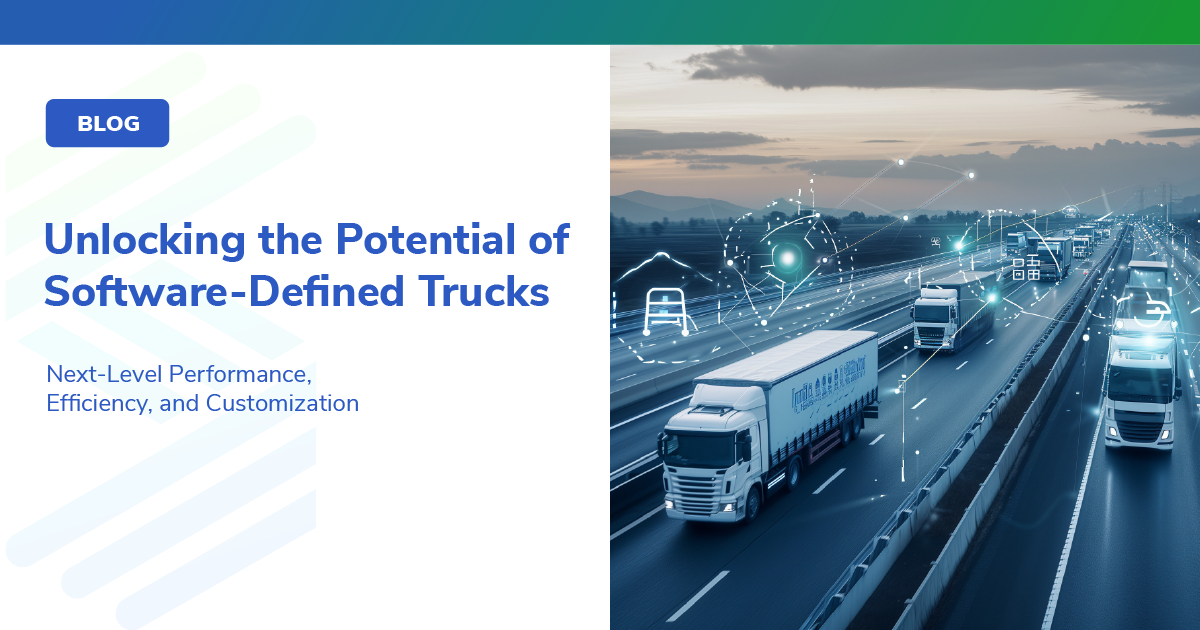
/
March 22, 2024
/
#
Min Read
The Dynamic Nature of the Vehicle Edge and Cloud
In the evolving landscape of automotive technology, the symbiotic relationship between the vehicle edge and cloud computing is becoming increasingly vital. Traditionally, vehicles would transmit data to the cloud, where automakers painstakingly sifted and sorted, looking for proverbial insight needles in data set haystacks. However, that approach is changing alongside new technological advances in both the cloud and at the vehicle edge.
AI-Powered Analytics in the Cloud
Artificial Intelligence (AI) is shifting the automotive industry towards a more efficient and targeted approach to data processing and analysis. AI algorithms that live in the cloud expedite the analysis of software-defined vehicle (SDV) data by filtering out irrelevant information and highlighting critical insights. This allows original equipment manufacturers (OEMs) to swiftly identify trends, anticipate issues, and make informed decisions, however, it demands that all the vehicle’s data be sent to the cloud – a task that is both costly and time-consuming.
Signal Filtration and Event Logging
Crucial developments in the automotive industry that address cloud reliance involve improving vehicle edge capabilities. Through signal filtering, vehicles can manage data more efficiently by employing strategies like periodic checks, monitoring changes, and calculating minimum, maximum, and average values. This approach, coupled with event logging – where events within the vehicle's network trigger the capture of specific data from before, during, and after the event – allows OEMs to streamline data transmission.
Employing edge computing allows vehicles to analyze data locally and transmit only the computed results to the cloud. These methods not only conserve bandwidth but also ensure that the cloud processes pertinent information only, thereby enhancing efficiency and reducing data transfer and storage costs. Of course, the question then arises: how do automakers know what changes to look for and what data to send?
A Hybrid Approach to SDV Data Analytics
Imagine a scenario where a vehicle continuously sends all its data to the cloud. As mentioned, doing this long-term is a drain on valuable resources, however, doing it temporarily allows OEMs to identify key trends and specific areas of interest. Based on AI-driven insights, automakers can use this initial influx of data to establish specific edge rules for connected vehicle data transmission.
For example, if an analysis of data collected via data logging reveals a recurring issue like a potential battery fire, the manufacturer can then use these insights to develop an algorithm that lives on the vehicle and detects the fires before they happen. In other words, it gives the vehicle the ability to recognize and react to an event, in this case, a battery fire, before it happens. The vehicle’s corrective action could be anything from sending a power-down warning to reducing speed until the engine can be safely turned off.
When used for data logging this hybrid approach to data management and analysis reduces the volume of data transmitted, conserving bandwidth and minimizing cloud storage requirements. Additionally, it enables the development of edge computing algorithms, such as those required to execute complex algorithms and make autonomous decisions based on real-time data analysis, as in the battery example above.
The Dynamic Nature of Vehicle Edge and Cloud
This interplay between the vehicle edge and the cloud represents a dynamic and continuous learning process. By progressively moving more capabilities to the vehicle edge, automakers can enable immediate analysis and responsiveness, both of which are instrumental in advancing automotive safety, reliability, and efficiency, while also reducing the associated costs.
The dynamic nature of the vehicle edge and cloud in the automotive industry exemplifies the continual evolution of technology. It's a testament to how embracing cutting-edge solutions like the data and software-defined device products offered by Sibros can lead to significant advancements in automotive safety, performance, and cost-effectiveness. As we continue to innovate, the possibilities for smarter, more connected, and more software-defined vehicles become increasingly boundless. The question is: are you ready to embrace them? To learn more about AI-driven analytics and data management, contact Sibros today.













